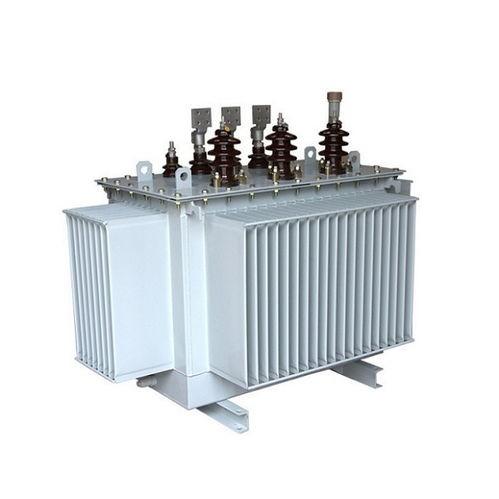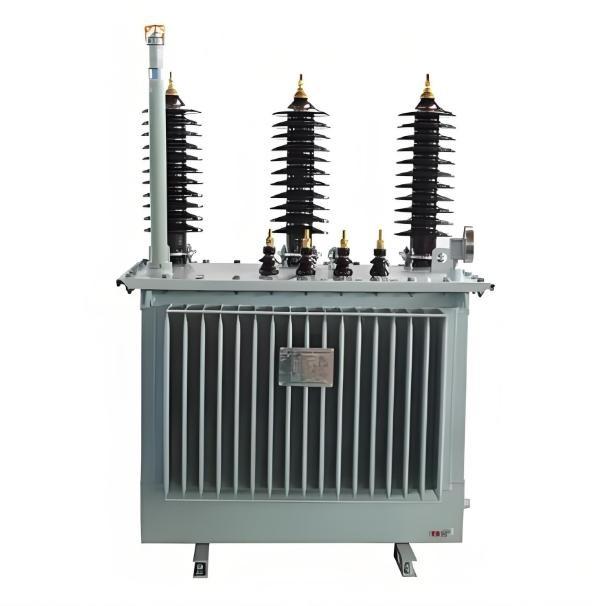Dukkarin Littattafan Daga Maha'min Karkashin Kuliya
By James, 10 Shekara a Karkashin Kuliya
Salamu alaikum, Ina James, da na yi aiki a karkashin kuliya zuwa 10 shekara.
Daga fadada takalma a tushen substation da zabi'ar abubuwa, zuwa kuma gudanar da shirye-shiryar relay protection da kuma takamakon system automation na mafi girman hukuma, wanda ya fi amfani da shi a kan aikins yana da kyau shine current transformer (CT).
Har zuwa, daga mai ba da nasararsa wanda ya faru:
“Me kadan ya kamata a zabe current transformers don circuits ta station transformer ta 10kV?”
Babu baya! Akwai masu iya so in zama CT suna nufin cewa ana nufin an samun ratio ta current ta rated — amma don inganta ma'adon circuit, kaɗan zaka iya duba abubuwa da dama.
Yanzu, za mu sharhi min game da kalmar adalci — da duk ilimin da na samu a kan aikins zuwa 10 shekara — me kadan ya kamata a zabe CTs don circuits ta 10kV station transformer, ma'anarta abubuwan parameter, da kuma tare da hanyar zabe daidai.
Babu harshen mafi karatu, babu standards da suka kawo — kawai ilimin da ake iya amfani da shi a rayuwar.
1. Me Da Muƙa Tsakanin Zabe CTs Don Circuits Ta Station Transformer?
Idan station service transformer ba shi ne power transformer mai ban sha'awa, amma yana da muhimmanci a bayyana kuliya na substation — kasuwanci power na kontrol, light, power na kiyaye, da kuma UPS systems.
Idan station transformer yake jawabi ko hanyar tsaro yake jawabi, zai iya haɗa da:
Gajimta power na kontrol;
DC system yake jawabi aikin charging;
Substation duka yake jawabi.
Kuma saboda current transformer shi ne abu mai ban sha'awa don hanyar tsaro da kuma measurement, zabe shi ya kunshi cewa hanyar tsaro yana da amanar da kuma measurements yana da dabbar.
Saboda haka, zabe CT daidai = amanar + dabbar + cost-effectiveness.

2. Shida Abubuwa A Zabe CTs Don Circuits Ta 10kV Station Transformer
Daga ilimin 10 shekara da na samu a kan field da project practice, wadannan ne shida abubuwan da ke da muhimmanci a duba:
Abubuwa 1: Rated Primary da Secondary Current
Muhimmiyar: Duba cewa CT yana yi aiki da dabba da kuma hanyar tsaro yana da amanar.
Wannan shine parameter mai ban sha'awa da muhimmanci.
Tsunan da ake amfani da su:
Primary current: 50A, 75A, 100A, 150A (da ɗan ɗan capacity ta station transformer)
Secondary current: 5A ko 0.5A (most modern protection devices use 0.5A)
Zakin da na so:
Amfani da primary current 1.2~1.5 times the station transformer’s rated current;
Don microprocessor-based protection, prefer 0.5A output to reduce secondary load;
Avoid selecting too high a rating — otherwise accuracy may be poor at low currents, affecting protection performance.
Abubuwa 2: Accuracy Class Matching the Application
Muhimmiyar: Duba cewa abubuwan da suka da (kyau, measurement, metering) suka samu signals da dabbar.
Abubuwan da suka da da biyo suna neman dabbar da dama.
Tsunan da ake amfani da su:
Measurement winding: Class 0.5
Metering winding: Class 0.2S
Protection winding: 5P10, 5P20, 10P10, etc.
Ilmin da na samu:
Station transformer circuits usually don’t require high-precision metering unless there's billing involved;
Protection windings must maintain linearity during short circuits;
Multi-winding CTs offer more flexibility and are recommended.
Abubuwa 3: Rated Output Capacity (VA Value)
Muhimmiyar: Duba cewa CT zai iya drive meters ko hanyar protection devices da suka shiga.
Capacity ba ta tabbas zai iya haɗa da voltage drop, wanda yake haɗa da measurement accuracy ko hanyar tsaro.
Formula ta kula:
Total Load = Cable Impedance + Instrument/Protection Device Input Impedance
Zakin da na so:
Typically choose between 10–30 VA;
Microprocessor protection devices consume less power — lower capacity acceptable;
If the secondary cable is long (e.g., over 50 meters), increase the capacity appropriately;
Don’t blindly select high capacity — avoid core saturation.
Abubuwa 4: Thermal and Dynamic Stability Check
Muhimmiyar: Duba cewa CT zai iya da ƙananan short-circuit current bila ƙarama.
A 10kV systems, short-circuit currents can reach thousands of amps.
How to do it:
Check maximum short-circuit current (Ik);
Verify CT thermal stability current (It) and dynamic stability current (Idyn);
Generally, It ≥ Ik (for 1 second), Idyn ≥ 2.5 × Ik
Real case: I once had a CT explode after a short circuit — turned out the dynamic stability current didn’t meet system requirements. Replacing with a higher-rated CT solved the problem.
Abubuwa 5: Installation Method and Structure Type
Muhimmiyar: Duba cewa CT yana da ƙarin tsarin aiki da kuma yana da ƙarin ƙarin, da kuma yana da space.
Common CT types include:
Core-type (common in switchgear)
Post-type (suitable for outdoor use)
Bushing-type (often used on transformers)
Zakin da na so:
In 10kV switchgear, core-type CTs are most common;
Make sure the conductor size matches the core hole diameter;
For tight spaces, consider split-core CTs for easier installation and removal;
In humid or corrosive environments, choose moisture-resistant or corrosion-proof models.
Abubuwa 6: Polarity and Wiring Method
Muhimmiyar: Duba cewa direction ta signal to protection relays and instruments yana da dabbar, bala ƙungiyar.
Incorrect polarity can lead to:
Misoperation or failure of protection;
Wrong power flow direction judgment;
False alarms in differential protection.
Ilmin da na samu:
All CTs should clearly mark polarity terminals (P1, P2);
Use subtractive polarity connection consistently;
Always perform a polarity test after installation or maintenance;
Use a dedicated polarity tester or DC method for verification.
3. Other Practical Tips
In addition to the six key points above, here are some other important notes:
Multi-winding Configuration:
Separate windings for protection, measurement, and metering to avoid interference;
Reserve spare windings for future expansion.
Excitation Characteristics:
Especially for protection windings, good excitation characteristics improve protection reliability;
If possible, perform an excitation curve test to confirm core performance.
Sample Selection Reference for a 50kVA Station Transformer

4. My Final Suggestions
As someone with 10 years of field experience, I want to remind all professionals:
“Don’t just look at the model number — always consider the actual circuit, protection setup, and installation environment when selecting a CT.”
Especially in seemingly "simple" 10kV station transformer circuits, improper selection often leads to serious consequences.
Here are my recommendations for different roles:
For Maintenance Personnel:
Learn how to read CT nameplate information;
Understand basic parameter meanings;
Be familiar with polarity testing methods;
Report any abnormalities promptly.
For Technical Staff:
Master CT selection calculation methods;
Understand protection winding characteristics;
Know how to interpret system short-circuit parameters;
Be able to analyze excitation curves.
For Managers or Procurement Teams:
Clearly define technical specifications;
Choose reputable manufacturers with stable quality;
Request full test reports from suppliers;
Maintain equipment records for traceability.
5. Closing Thoughts
Current transformers may look small, but they are the eyes and ears of the entire power system.
They’re not just about reducing current — they’re the basis for protection, the foundation for metering, and the guarantee of safety.
After 10 years in the electrical field, I often say:
“Details determine success or failure, and proper selection ensures safety.”
If you ever run into difficulties selecting CTs, dealing with frequent protection misoperations, or unsure if your parameters are suitable, feel free to reach out — I’m happy to share more hands-on experience and solutions.
May every current transformer operate stably and safely, safeguarding the accuracy and reliability of our power grid!
— James
























